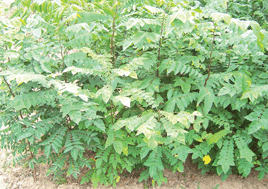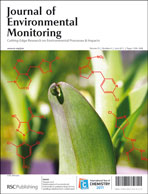Intraspecific variation in cadmium tolerance and accumulation of a high-biomass tropical tree Averrhoa carambola L.: implication for phytoextraction†
Abstract
Averrhoa carambola L., a high-biomass tropical tree, has recently been shown to be a strong accumulator of cadmium (Cd) and has great potential for Cd phytoextraction. In the present study, field studies and a controlled-environment experiment were combined to establish the extent of variation in Cd tolerance and accumulation at the cultivar level using 14 to 19 cultivars of A. carambola. The results indicated that all cultivars tested could accumulate Cd at high but different levels, and that Cd tolerance also varied greatly between these cultivars. It is confirmed that the high Cd tolerance and accumulation capacity are species-level and constitutional traits in A. carambola. However, no correlation was detected between tolerance index and accumulation of Cd in different cultivars, suggesting that the two traits are independent in this woody Cd accumulator. More importantly, cultivar Wuchuan Sweet (WCT) was shown to have the highest Cd-extraction potential; it yielded a high shoot biomass of 30 t ha−1 in 230 d, and extracted 330 g ha−1 Cd in the aerial tissues grown in Cd-contaminated field soil, which accounted for 12.8% of the total soil Cd in the top 20 cm of the soil profile.


 Please wait while we load your content...
Please wait while we load your content...